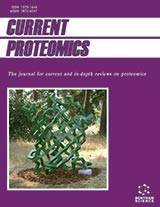Abstract
Background: Enzymes are biological macromolecules which can act as catalysts and help complex biochemical reactions. They can increase the rate of a reaction by reducing its activation energy. Different enzymes can catalyze different chemical reactions.
Objective: With the appearance of vast human protein data, correctly identifying the human enzymes class is extremely important to understand their functions. However, no computational method was developed to predict enzyme functional classes in human. We aimed to develop a computational method to discriminate human enzymes from non-enzymes and further predict the classes of human enzymes.
Method: In this paper, the pseudo amino acid composition was proposed to formulate proteins by incorporating rigidity, flexibility and irreplaceability of amino acids. The feature selection technique was used to optimize the feature set. We proposed SVM to perform prediction.
Results: The results of five-fold cross-validation test show that the overall accuracies are 72.6% and 46.1%, respectively for discriminating human enzymes from non-enzymes and predicting six classes of human enzymes.
Conclusion: The work in this study provides an efficient method on this issue. Especially, three kinds of new characteristics were introduced to incorporate into PseAAC. The results indicate that the three characteristics of amino acids can be used in human enzyme prediction.
Keywords: Human enzyme, pseudo amino acid composition, rigidity, flexibility, irreplaceability.
Graphical Abstract
Current Proteomics
Title:Predicting Human Enzyme Family Classes by Using Pseudo Amino Acid Composition
Volume: 13 Issue: 2
Author(s): Yun Wu, Hua Tang, Wei Chen and Hao Lin
Affiliation:
Keywords: Human enzyme, pseudo amino acid composition, rigidity, flexibility, irreplaceability.
Abstract: Background: Enzymes are biological macromolecules which can act as catalysts and help complex biochemical reactions. They can increase the rate of a reaction by reducing its activation energy. Different enzymes can catalyze different chemical reactions.
Objective: With the appearance of vast human protein data, correctly identifying the human enzymes class is extremely important to understand their functions. However, no computational method was developed to predict enzyme functional classes in human. We aimed to develop a computational method to discriminate human enzymes from non-enzymes and further predict the classes of human enzymes.
Method: In this paper, the pseudo amino acid composition was proposed to formulate proteins by incorporating rigidity, flexibility and irreplaceability of amino acids. The feature selection technique was used to optimize the feature set. We proposed SVM to perform prediction.
Results: The results of five-fold cross-validation test show that the overall accuracies are 72.6% and 46.1%, respectively for discriminating human enzymes from non-enzymes and predicting six classes of human enzymes.
Conclusion: The work in this study provides an efficient method on this issue. Especially, three kinds of new characteristics were introduced to incorporate into PseAAC. The results indicate that the three characteristics of amino acids can be used in human enzyme prediction.
Export Options
About this article
Cite this article as:
Wu Yun, Tang Hua, Chen Wei and Lin Hao, Predicting Human Enzyme Family Classes by Using Pseudo Amino Acid Composition, Current Proteomics 2016; 13 (2) . https://dx.doi.org/10.2174/157016461302160514003437
| DOI https://dx.doi.org/10.2174/157016461302160514003437 |
Print ISSN 1570-1646 |
| Publisher Name Bentham Science Publisher |
Online ISSN 1875-6247 |
 27
27 1
1
- Author Guidelines
- Bentham Author Support Services (BASS)
- Graphical Abstracts
- Fabricating and Stating False Information
- Research Misconduct
- Post Publication Discussions and Corrections
- Publishing Ethics and Rectitude
- Increase Visibility of Your Article
- Archiving Policies
- Peer Review Workflow
- Order Your Article Before Print
- Promote Your Article
- Manuscript Transfer Facility
- Editorial Policies
- Allegations from Whistleblowers























